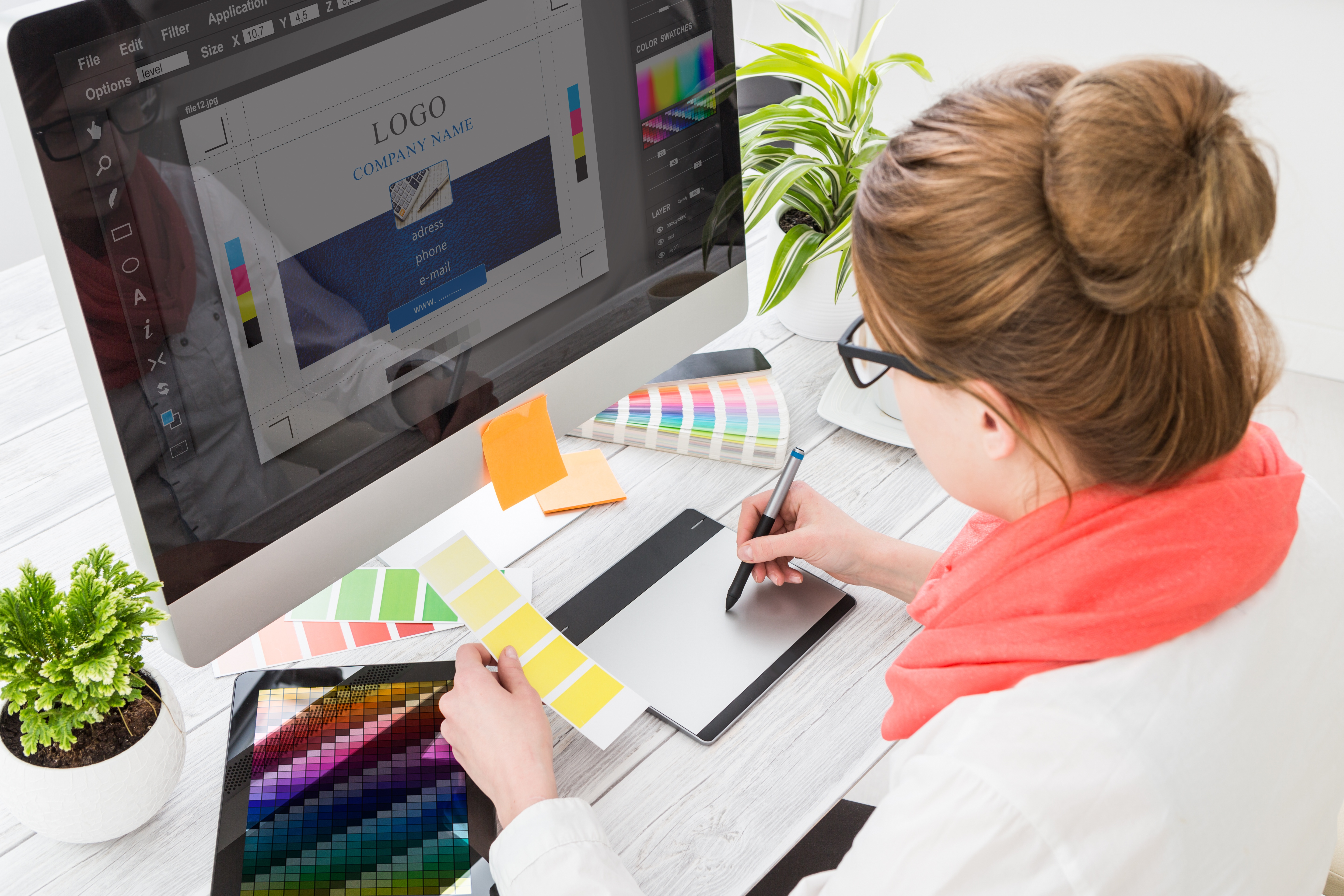What is a UI Designer?
First and foremost, UI stands for User Interface, making this job title User Interface Designer.
When using a website, most (if not all) people prefer an easy to use interface. They want to be able to go from one page to another, or add an item to their shopping cart, or like a post on Twitter, with ease.
In order to do so, the interface of the site needs to be set up and organized in a way that will easily support the users’ intentions. The people responsible for this interface system is – you guessed it – UI designers!
UI Designer Job Description
A user interface designer has the goal to make technology as easy to use as possible for the consumers. Your clients should be your main priority and you must consider how user-friendly the design is. You should be able to work with software packages like Sketch or Adobe Photoshop.
The flow of information and the ability to easily access or use the website is something consumers not only want, but need. The organization of the interface is where your job comes into play. There will always be jobs and websites that need maintenance with usability and functionality and it is your job to provide the necessary help. You must think of things like, “how can I make it easier to access the information page”, and then do it.
What does a UI Designer really do?
A UI designer takes care of the look and feel of a site or an application. They add features like sliders to make it easier to swipe through pages. They may add categories on the side to click on to make it easier to access the information. Their job is to ask questions like, “Does this font fit with the mood it’s trying to convey? Do these colors work? How can I fix the interface to make it easier to use?”
Basically, every button you press on a website and every time you scroll, the UI designer thought that it was a good idea. Even on this website right now, the user interface designer designed the flow of it allowing you to be able to use it with ease.
How to become a UI designer.
To begin, you don’t need a degree to be a UI designer. There are some important aspects an aspiring UI designer must have. You have to be a team player, you must be able and willing to learn new coding and technology. These things are always being updated and advanced. Also, you must care about other people’s perceptions of your work.
There are easy ways to advance your skills that don’t require a degree. You should start a UI portfolio as soon as you start getting experience. You can gain experience through freelance work - some of which I have included the links for below. You can also try to make your own website to include in your portfolio. Having that experience of starting from scratch will help to show off your creative side.
You can watch YouTube videos, read through blogs, and look into tutorial sites - some of which are also mentioned below. These will help with certain concepts you can’t quite grasp through technical learning. But you can also learn entirely from these places!
Of course, college or a technical school is also a viable option and having your degree will never hurt your chances. Going to a technical school will help you focus on your specialty of UI Design. My only qualm with schools is that the information you gather there isn't always current. The web design industry changes faster than schools can update their curriculum.
Then there is something else called General Assembly. It has both online and on-campus courses designed for certain skills – including web development and UX and UI design. I have included the link to the courses so you can start exploring your options!
Freelance websites to get work experience:
Tutorial sites where you can learn UI Design:
What is the Salary for a UI Designer?
The salary for a UI designer, like most careers, depends on the experience and the skill level of the individual. According to payscale.com, typically, you can make between $41,000 and $95,000. The average sits steadily around $64,000.
What is the difference between a UI designer and a UX designer?
As I mentioned before, UI stands for User Interface. In comparison, UX stands for User Experience.
A User Experience designer is responsible for how the user will react to the layout of the website. If there is a problem, they look to find the solution – and there can be many. They are indeed very much involved in the user’s experience.
A User Interface designer is responsible for laying out the interface. You create the site’s framework and put the whole thing together, making sure it is logically designed and can go from one thing to the next with ease. You will look at what the UX Designers found problems with, take their solutions, and actually apply them to the product to enhance the site.


